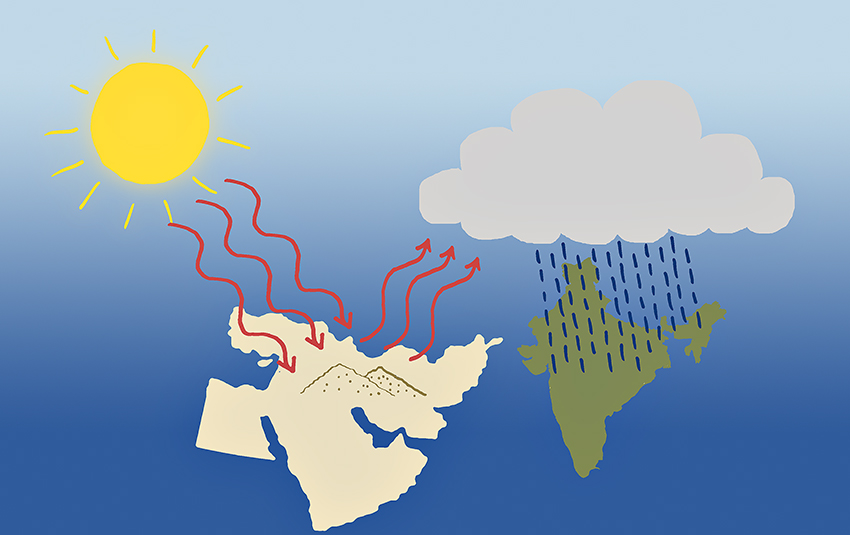Large-scale climate models sometimes depend on very small dust and sand particles.
A recent study involving research completed at UT’s Jackson School of Geosciences concluded that the more efficiently sand particles in the Middle East absorb heat, the stronger the Indian summer monsoons will be. The results of this study can be used to develop more accurate monsoon prediction models, which could save money and lives.
Qinjian Jin, who lead the study at UT for his dissertation and is currently working as a postdoctoral researcher at MIT, said that these particles, which are stirred up by dust storms throughout the Middle East, play an important role in global climate patterns.
“Our main hypothesis is that the dust particles, once they are kicked up into the atmosphere in the Middle East, especially in the Arabian Peninsula, can be transported to the Arabian Sea,” Jin said. “Once the dust is at the Arabian Sea, it absorbs solar radiation and heats the air over the sea. This heated air can then change the monsoon circulation, which can transport more moisture from over the sea area to the Indian peninsula, increasing the summer monsoon.”
Jin said that the ability of dust particles to absorb solar radiation depends on their chemical composition. Particles with more iron or black carbon lead to more efficient heat absorption.
Jin, who has been working on this study since 2011, said the team began by completing an observational study using meteorological data and discovered a strong positive relationship between the dust in the Middle East and rainfall in India. To confirm this relationship, the team used supercomputers and numerical simulations.
“In the first paper we figured out a physical mechanism to link the dust to monsoon rainfall,” Jin said. “In this new study we used high resolution computer programs to study to what extent dust storms can change the rainfall during India’s summer monsoons.”
According to Jiangfeng Wei, UT geological sciences research assistant who provided guidance during the study, monsoons are caused by the heat/temperature difference between the land and the ocean during different seasons.
“In summer, [India] is warmer, and the ocean is cooler,” Wei said. “Their temperature difference causes wind to blow from ocean to land and transfer moisture from ocean to land, causing rainfall. If these sand particles can absorb more heat in the summer, it will cause larger land-sea temperature differences and a stronger monsoon.”
India relies on the monsoon season for rain to grow crops, but stronger monsoons may lead to flooding and death.
Wei said that while sand particles are not the only factors that influence monsoons — other factors include ocean temperature, spring snow cover over Eurasia, soil moisture and changes in land cover — the discovery of this relationship may affect the simulation and prediction of Indian monsoons.
Jin said he wants Indian monsoon models to account for the influence of dust from the Middle East and specifically account for the ability of some dust particles to absorb heat more efficiently.
“The main conclusion is that current climate models should find better ways to parameterize dust’s ability to absorb solar radiation,” Jin said. “If they can get it right, I think they can get better simulations of India’s monsoon rainfall. The predictions will become better and more advice can be given in to people in India. They can say that this year the monsoon will be wetter or drier, and know this a few months in advance.”















